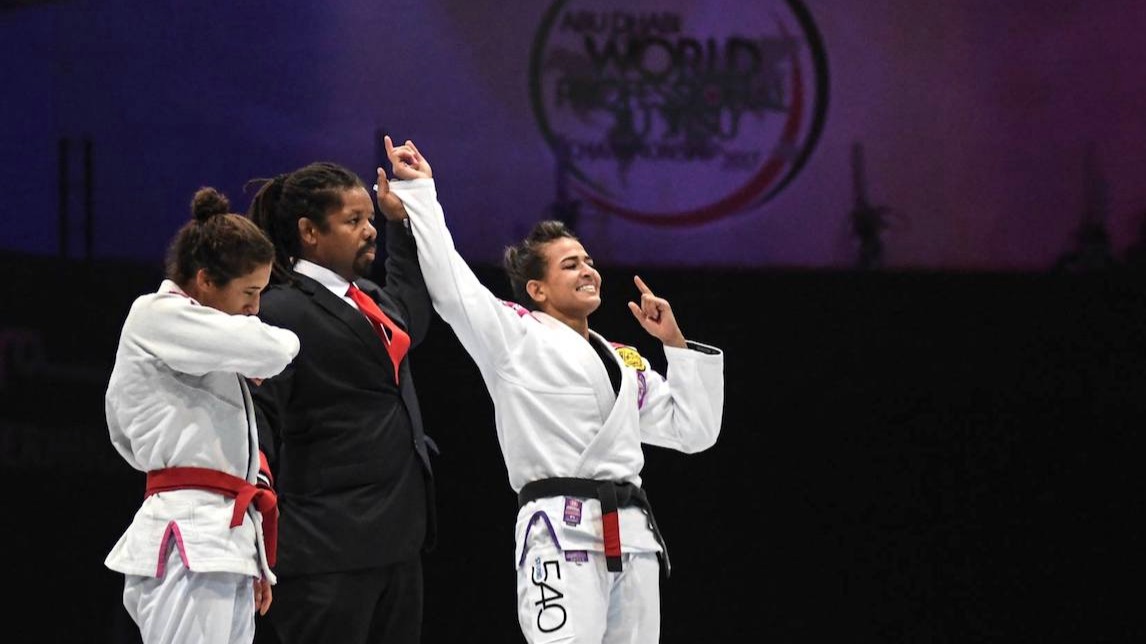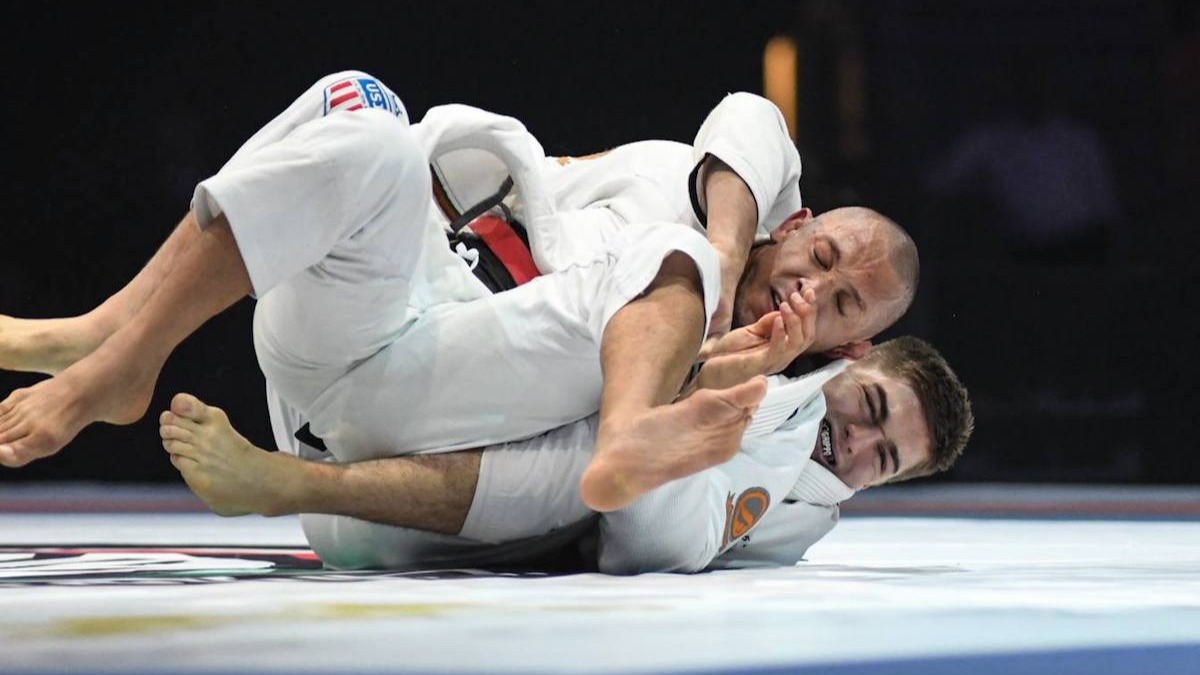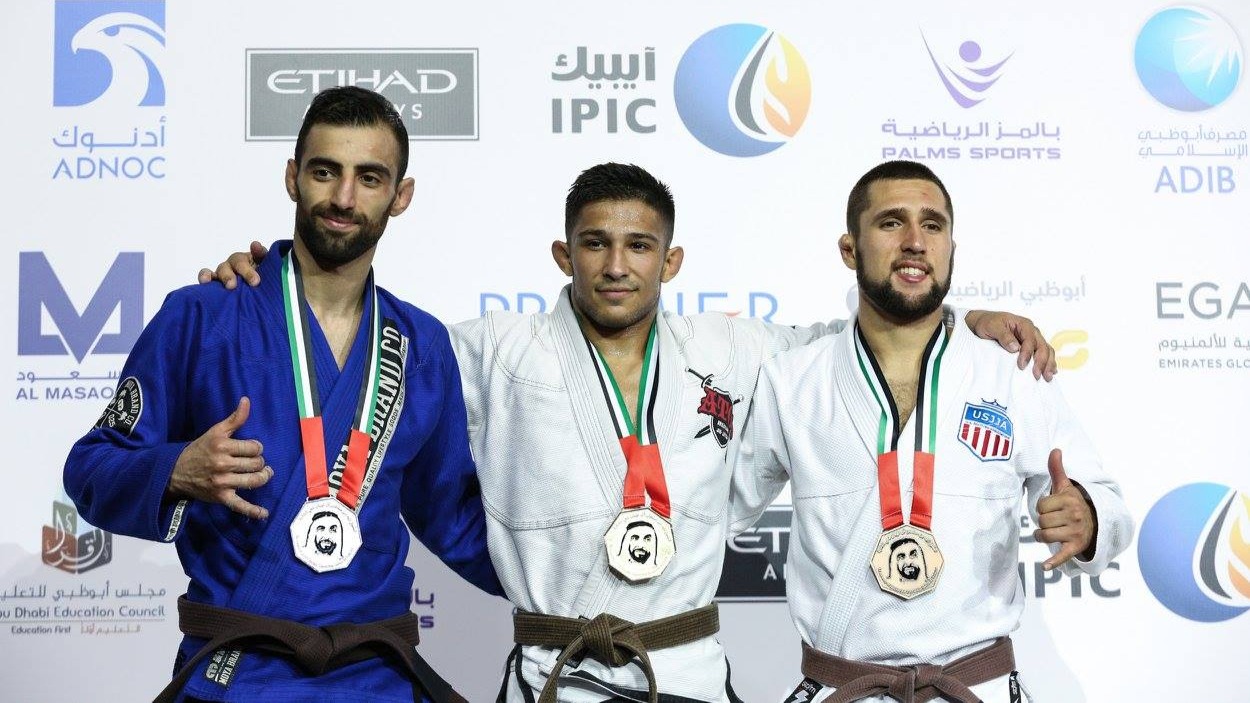Abu Dhabi 2017 World Professional Jiu-Jitsu ChampionshipApr 24, 2017 by Hywel Teague
World Pro 2017 Analysis: Black & Brown Belt Medals Broken Down By Country
World Pro 2017 Analysis: Black & Brown Belt Medals Broken Down By Country
The changes introduced at the 2017 World Pro meant that countries were limited to only two competitors in the same weight division. This meant that the podiums looked very different to other tournaments around the world.

The changes introduced at the 2017 World Pro meant that countries were limited to only two competitors in the same weight division. This meant that the podiums looked very different to other tournaments around the world, which are usually dominated by Brazilian athletes in first, second and third place.
The introduction of this new system was announced only a couple of weeks before the World Pro, with many athletes unaware exactly how it would function going into the tournament.

Beatriz Mesquita (BRA) beats Tammi Musumeci (USA) in the final of the women's -62kg division. Photo: Chase Smith / FloGrappling
While some felt that the rule was prejudicial towards Brazilians, who have long been the most dominant force in the sport, the new system was intended to create a true world championship disputed between different countries.
The inspiration for the change came from sports such as judo and wrestling, which apply the same limits in their international tournaments.
Predictably -- even with a limit placed on the number of Brazilian entrants per category -- they placed top of the medal table in the male black belt, combined female brown / black belt, and male adult brown belt divisions.
Brazil won gold in every category except two -- male black belt -62kg and -69kg, which were claimed by Michael Musumeci and Gianni Grippo respectively.

Gianni Grippo (USA) takes the back of Tiago Bravo (BRA) in the men's 69kg final. Photo: Chase Smith / FloGrappling
Athletes from the same country would be seeded so they met no later than the semifinals. This was designed so that no country would claim both gold and silver in the same division, but there were two occasions when this happened anyway.
The 56kg male black belt division and the female brown/black belt 90kg division were decided by round robin.
In the case of the 56kg male black belt, there were only three athletes -- two from Brazil, and one from Japan. The accumulated wins and losses placed the Brazilians Rodnei Junior and Wellington Lima ahead of Todokoro Masaaki. The female 90kg brown/black division was comprised solely of Brazilian athletes. Nathiely Jesus and Talita Nogueira emerged as the top athletes in the Country Qualifer round-robin, late meeting in the final to decide the gold and silver medal (no third place was awarded).
Black belt medals by country
Male black belt results by country
Female Brown/Black

The podium of the male adult brown belt division. Left to right: Mani Tavanaei (IRI) Pablo Dutra (BRA), Shane Torres (USA). Photo: UAEJJF
Brazil led the table with a total of nine medals. The United States tallied three medals, with Thomas Keenan taking the lone gold medal for the USA.
The tiny country of Moldova claimed a gold medal in the 110kg division, with Eldar Rafigaev beating Matheus Xaiver (BRA) in the final.
Eight countries claimed medals at black belt, but 11 nations made it to the podium in the brown belts. Brazil claimed less than half of all available medals (9), with the remaining 12 medals shared by 10 countries.
Brown belt medals by country
Male Brown Belt
The introduction of this new system was announced only a couple of weeks before the World Pro, with many athletes unaware exactly how it would function going into the tournament.

Beatriz Mesquita (BRA) beats Tammi Musumeci (USA) in the final of the women's -62kg division. Photo: Chase Smith / FloGrappling
While some felt that the rule was prejudicial towards Brazilians, who have long been the most dominant force in the sport, the new system was intended to create a true world championship disputed between different countries.
The inspiration for the change came from sports such as judo and wrestling, which apply the same limits in their international tournaments.
Predictably -- even with a limit placed on the number of Brazilian entrants per category -- they placed top of the medal table in the male black belt, combined female brown / black belt, and male adult brown belt divisions.
Brazil takes over half of all possible medals at black belt
With seven weight categories for the men and five for the women, there were 35 possible medals available in the black and brown/black belt divisions: 12 gold, 12 silver and 11 bronze (the Female / Adult / Brown-Black / 90kg had no third place).Brazil won gold in every category except two -- male black belt -62kg and -69kg, which were claimed by Michael Musumeci and Gianni Grippo respectively.

Gianni Grippo (USA) takes the back of Tiago Bravo (BRA) in the men's 69kg final. Photo: Chase Smith / FloGrappling
Athletes from the same country would be seeded so they met no later than the semifinals. This was designed so that no country would claim both gold and silver in the same division, but there were two occasions when this happened anyway.
The 56kg male black belt division and the female brown/black belt 90kg division were decided by round robin.
In the case of the 56kg male black belt, there were only three athletes -- two from Brazil, and one from Japan. The accumulated wins and losses placed the Brazilians Rodnei Junior and Wellington Lima ahead of Todokoro Masaaki. The female 90kg brown/black division was comprised solely of Brazilian athletes. Nathiely Jesus and Talita Nogueira emerged as the top athletes in the Country Qualifer round-robin, late meeting in the final to decide the gold and silver medal (no third place was awarded).
Black belt medals by country
| Country | Medals | Gold | Silver | Bronze |
|---|---|---|---|---|
| Brazil | 20 | 10 | 4 | 6 |
| United States | 7 | 2 | 3 | 2 |
| Japan | 2 | 1 | 1 | |
| Australia | 2 | 2 | ||
| Ireland | 1 | 1 | ||
| Poland | 1 | 1 | ||
| UAE | 1 | 1 | ||
| United Kingdom | 1 | 1 |
| 56kg | 62kg | 69kg | 77kg | 85kg | 94kg | 110kg |
|---|---|---|---|---|---|---|
| 1. BRA | 1. USA | 1. USA | 1. BRA | 1. BRA | 1. BRA | 1. BRA |
| 2. BRA | 2. BRA | 2. BRA | 2. USA | 2. UAE | 2. POL | 2. IRL |
| 3. JPR | 3. BRA | 3. USA | 3. USA | 3. BRA | 3. BRA | 3. BRA |
| 49kg | 55kg | 62kg | 70kg | 90kg |
|---|---|---|---|---|
| 1. BRA | 1. BRA | 1. BRA | 1. BRA | 1. BRA |
| 2. JPR | 2. GBR | 2. USA | 2. USA | 2. BRA |
| 3. AUS | 3. BRA | 3. AUS | 3. BRA | 3. n/a |

The podium of the male adult brown belt division. Left to right: Mani Tavanaei (IRI) Pablo Dutra (BRA), Shane Torres (USA). Photo: UAEJJF
Brown belt results show great diversity
There are seven weight categories for the adult male brown belts, totaling 21 available medals.Brazil led the table with a total of nine medals. The United States tallied three medals, with Thomas Keenan taking the lone gold medal for the USA.
The tiny country of Moldova claimed a gold medal in the 110kg division, with Eldar Rafigaev beating Matheus Xaiver (BRA) in the final.
Eight countries claimed medals at black belt, but 11 nations made it to the podium in the brown belts. Brazil claimed less than half of all available medals (9), with the remaining 12 medals shared by 10 countries.
Brown belt medals by country
| Country | Medals | Gold | Silver | Bronze |
|---|---|---|---|---|
| Brazil | 9 | 5 | 1 | 3 |
| USA | 3 | 1 | 2 | |
| Moldova | 1 | 1 | ||
| France | 1 | 1 | ||
| Iran | 1 | 1 | ||
| Australia | 1 | 1 | ||
| Spain | 1 | 1 | ||
| United Kingdom | 1 | 1 | ||
| South Korea | 1 | 1 | ||
| Bahrain | 1 | 1 | ||
| Russia | 1 | 1 |
Male Brown Belt
| 56kg | 62kg | 69kg | 77kg | 85kg | 94kg | 110kg |
|---|---|---|---|---|---|---|
| 1. BRA | 1. BRA | 1. BRA | 1. USA | 1. BRA | 1. BRA | 1. MDA |
| 2. FRA | 2. IRI | 2. AUS | 2. ESP | 2. GBR | 2. KOR | 2. BRA |
| 3. USA | 3. USA | 3. BRA | 3. BHR | 3. BRA | 3. BRA | 3. RUS |